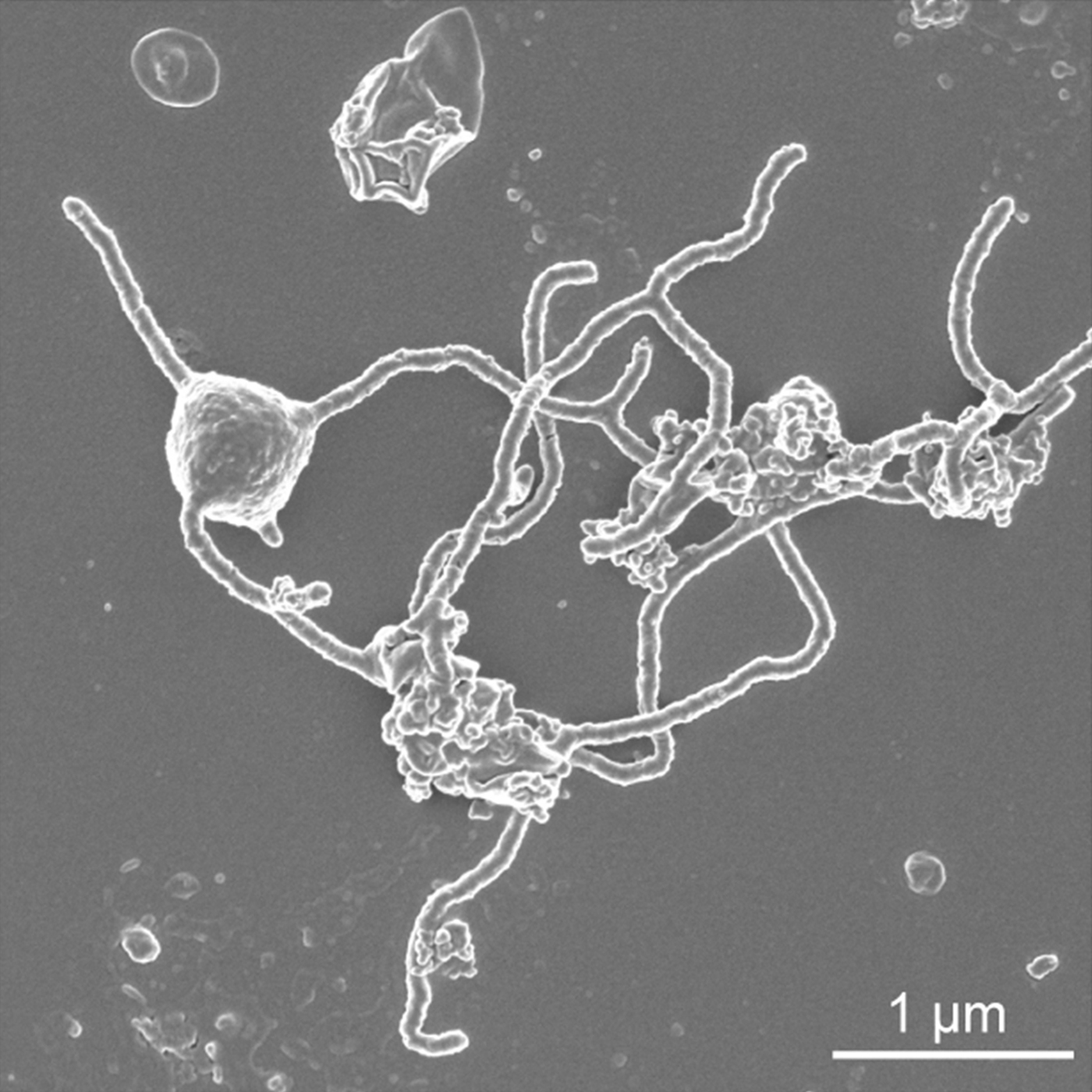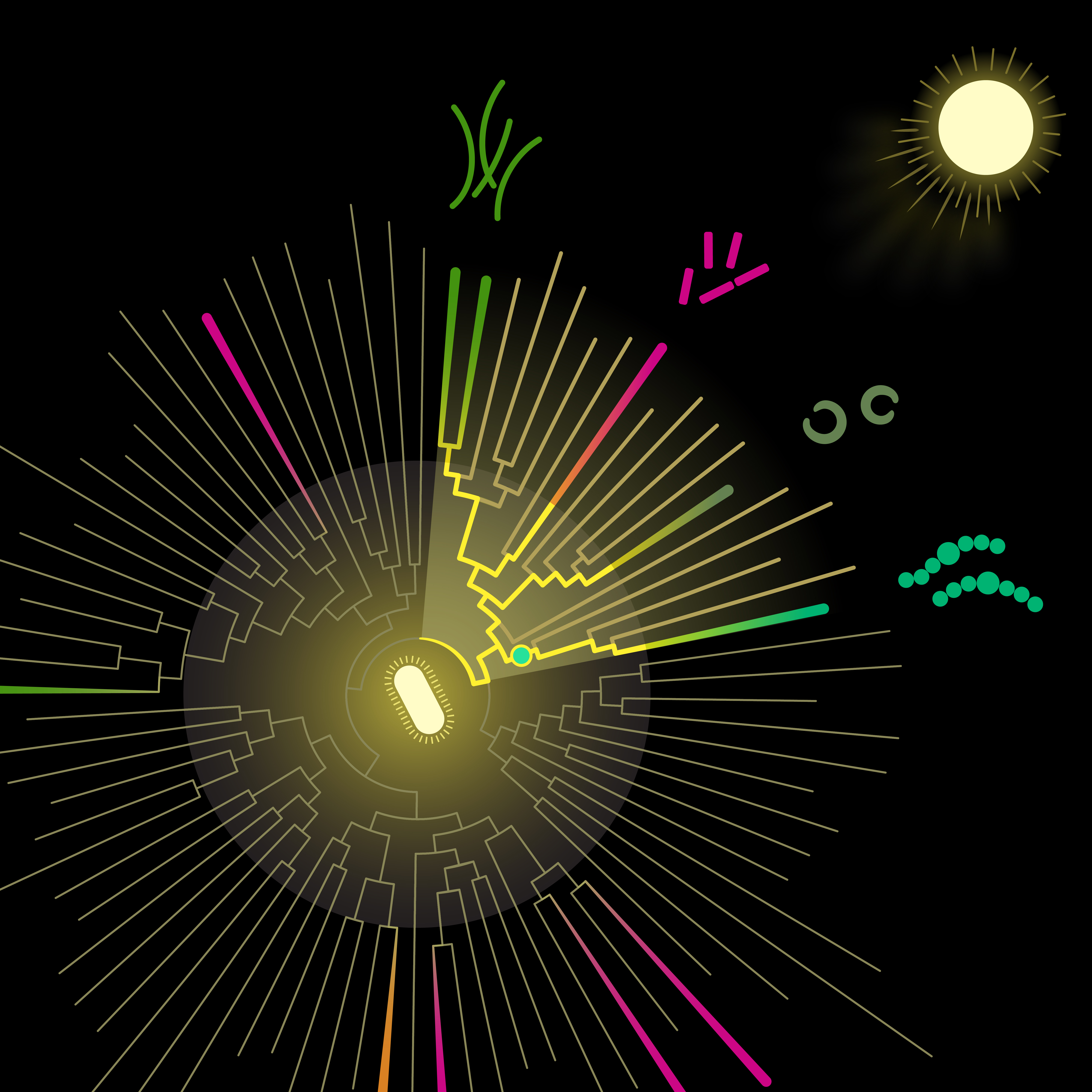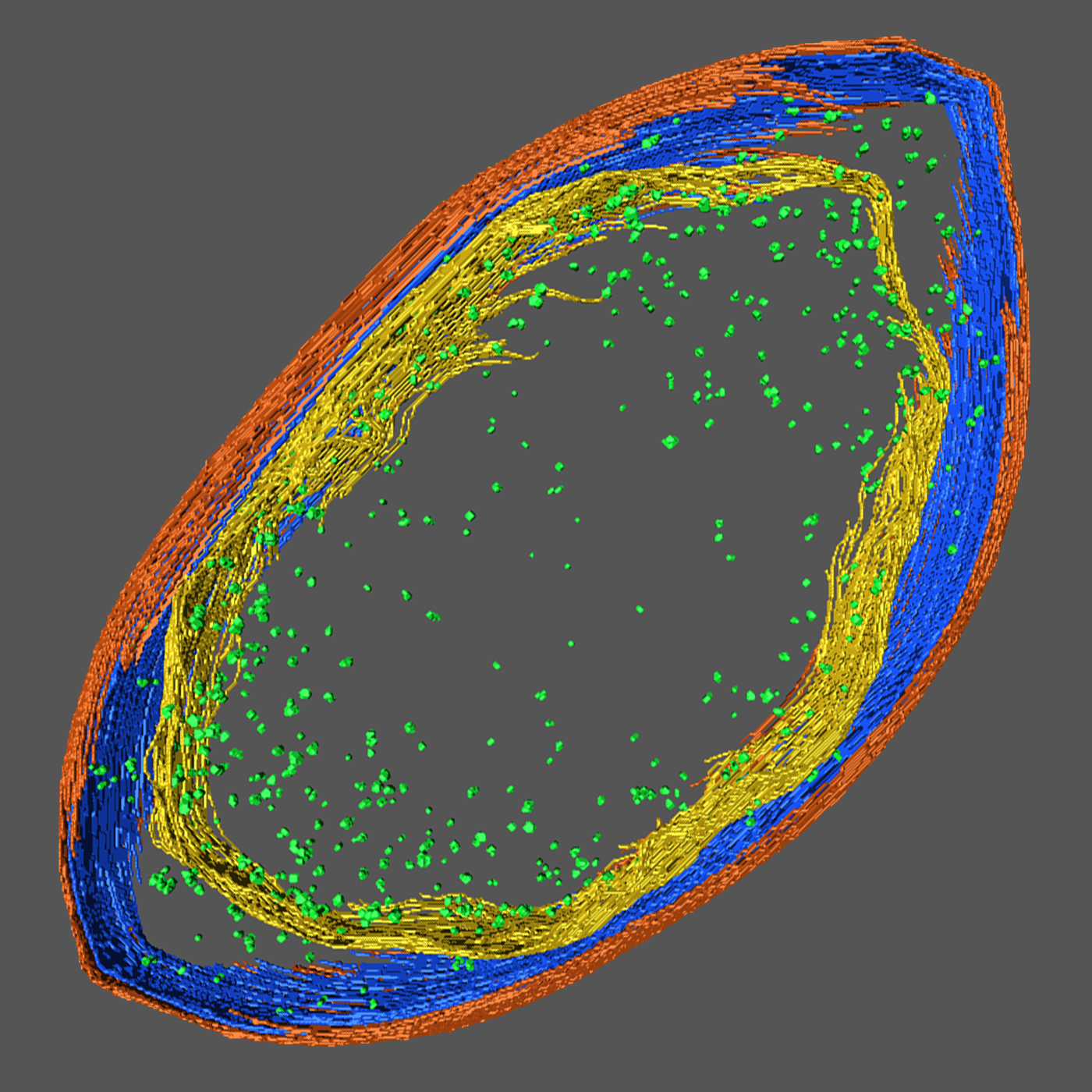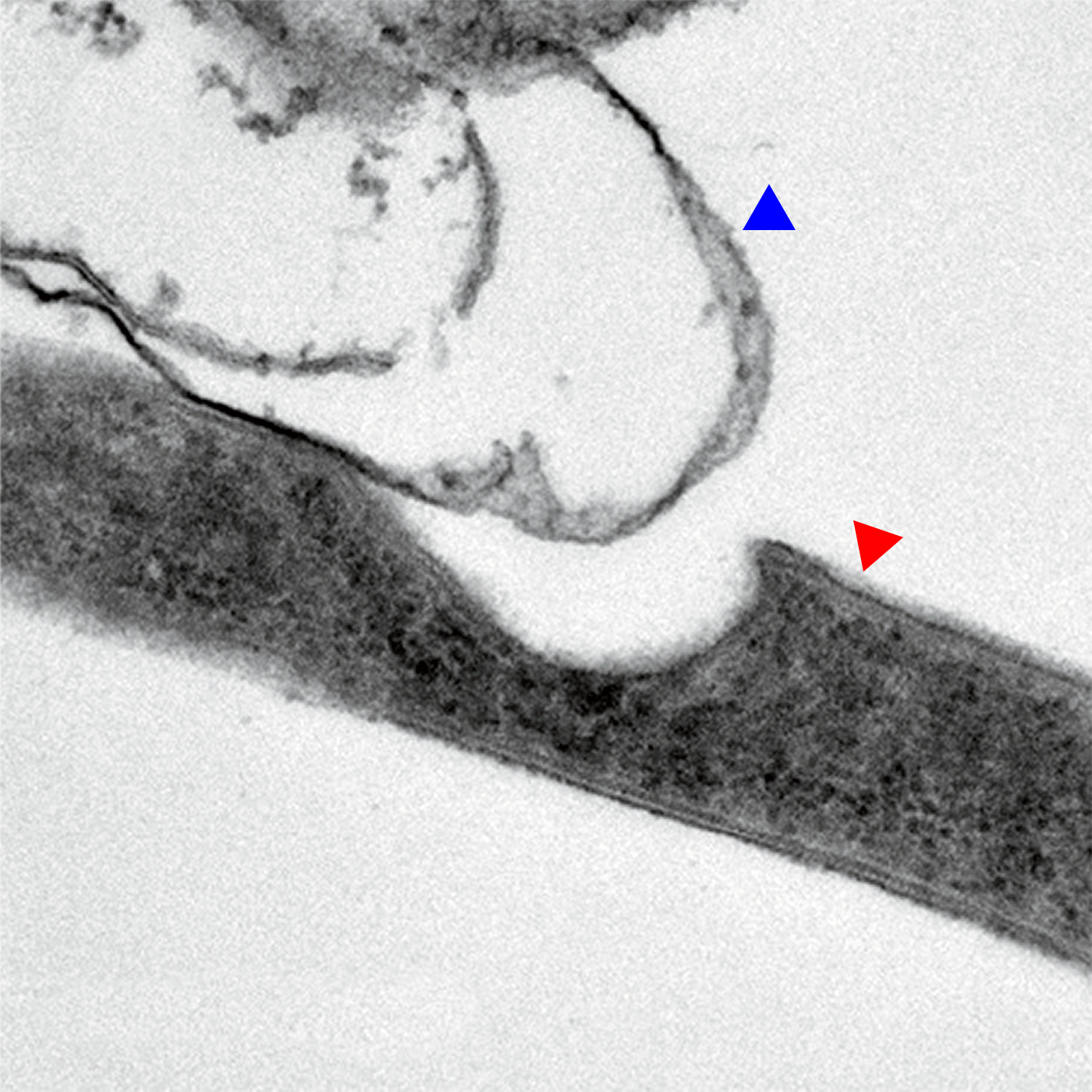research
some research topics in the group

Archaea preserve one of the most ancient metabolisms, methanogenesis (more than 3.46 billion years old!), capable of supporting life with just simple inorganic compounds – hydrogen (H2) and carbon dioxide. Histories recorded in genes have indicated that the origin of methanogenesis marked the origin of Archaea and that their evolution has been intertwined ever since (e.g., Mei et al., PNAS Nexus 2023). Our next target: what were other metabolism(s) and milestones in the evolution and diversification of Archaea?
Understanding who Archaea are and how they came to be is actually also essential for unraveling who “we” are. Us “Eukaryotes” – organisms with complex cells spanning nearly all life visible to the naked eye and more – are theorized to have originated from a lineage of archaea (“Asgard archaea”) and we have isolated the first member of this lineage (Imachi et al., Nature 2020, see right). We are currently exploring how these archaea live and what allowed their ancestor to make the evolutionary jump from simple to complex life.

Photosynthesis changed the course of life and Earth history. Life harnessing light allowed reactions that weren’t possible before and boosted production of organic matter, enriching our planet with compounds life can easily exploit for energy (e.g., sugars and oxygen). However, how photosynthesis originated, how photosynthesis developed over time from its primordial to modern forms, and how these relate to the evolution of life itself had remained enigmatic. Without uncovering this, we can neither understand Earth’s history nor truly comprehend the role/contribution of photosynthetic organisms (e.g., cyanobacteria, algae, land plants) in Earth’s ecosystems today. We study photosynthetic organisms’ uncharted history recorded in genes using phylogenetic tools (e.g., Nishihara et al., PNAS 2024) and overlooked physiology via careful inspection of isolate metabolic behavior using omics tools.

In the world of animals and plants, form and function go hand-in-hand. A giraffe’s long neck, a kangaroo’s pouch, and a whale’s balleen (filter/bristles) are some examples. On the other hand, the relationship between form and function remains unclear for microorganisms, especially those with simple cells (Bacteria and Archaea). With rapid advances in microscopy, we are able to visualize microorganisms at resolutions unimaginable even a decade ago. One major focus in our group is revisiting the cell structure of Bacteria and Archaea to discover new functions in these microorganisms and show that ties between form and function also applies to tiny organisms. Some examples are findings of a bacterium that has an extra membrane protecting its chromosome (almost like eukaryotes!?) (Katayama et al., Nat Comm 2020), an “indecisive” bacterium that threw away its ability to control its cell shape and make its own cell wall to save a little energy Katayama et al., Nat Microb 2024), and an archaeon that produces long, branching protrusions from its tiny cell for unknown reasons (Imachi et al., Nature 2020).

We live on a “microbial planet”, yet a vast majority of microorganisms that exist in nature remain “uncultured”, meaning no one has been able to grow let alone isolate the organism in the lab. Likewise, the functions of a vast majority of genes that microorganisms possess remain unknown. In other words, our understanding of microorganisms, their abilities, and the ecosystems these support is still very much preliminary. Our focus here is characterization of uncultured microorganisms through cultivation and environmental genomics (“metagenomics”) for discovery of novel microbial functions that drive overlooked ecological processes. For example, we’ve isolated the first oxygen-independent (anaerobic) dead cell-scavenging bacterium (Hirakata et al., ISME J 2023, see left figure with the isolated strain [red arrow] and a dead cell it has degraded the contents of [blue arrow]).

Life is theorized to have originated on the seafloor, in hydrothermal vents where hot alkaline hydrogen gas-rich fluids flow out. The vent fluids harbor a wide array of inorganic and organic compounds useful for life, which derives from a geochemical process known as “serpentinization”. Meanwhile, the vents also host a wide variety of minerals that can catalyze non-biological (“abiotic”) reactions remarkably similar to known those taking place in cells today. These together, in the absence of life, can theoretically form a chain of reactions very much like metabolism and this is theorized to have been the template for life (e.g., Preiner, Igarashi, and Muchowska et al., Nat Eco Evo 2020). What hydrothermal vent reactions and “metabolism” did life mimic in the beginning? How did these facilitate evolution from metabolism to LUCA to, later, Bacteria and Archaea? We are in search of overlooked microbial metabolisms related to primordial metabolism and any “living fossil” organisms that preserve traces of primordial metabolisms (e.g., Nobu et al ISME J 2023).